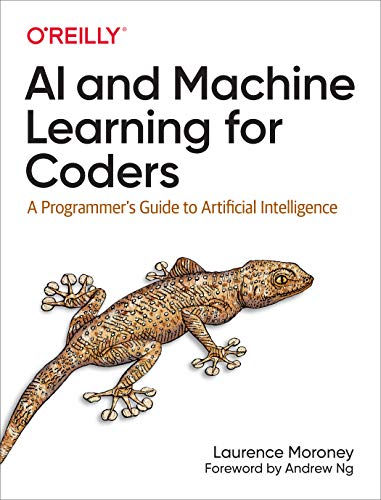If you’re looking to make a career move from programmer to AI specialist, this is the ideal place to start. Based on Laurence Moroney’s extremely successful AI courses, this introductory book provides a hands-on, code-first approach to help you build confidence while you learn key topics.
You’ll understand how to implement the most common scenarios in machine learning, such as computer vision, natural language processing (NLP), and sequence modeling for web, mobile, cloud, and embedded runtimes. Most books on machine learning begin with a daunting amount of advanced math. This guide is built on practical lessons that let you work directly with the code.
Who Should Read This Book
If you’re interested in AI and ML, and you want to get up and running quickly with building models that learn from data, this book is for you. If you’re interested in getting started with common AI and ML concepts—computer vision, natural language processing, sequence modeling, and more—and want to see how neural networks can be trained to solve problems in these spaces, I think you’ll enjoy this book.
And if you have models that you’ve trained and want to get them into the hands of users on mobile, in the browser, or via the cloud, then this book is also for you!
Most of all, if you’ve been put off entering this valuable area of computer science because of perceived difficulty, in particular believing that you’ll need to dust off your old calculus books, then fear not: this book takes a code-first approach that shows you just how easy it is to get started in the world of machine learning and artificial intelligence using Python and TensorFlow.
Technology You Need to Understand
The goal of the first half of the book is to help you learn how to use TensorFlow to build models with a variety of architectures. The only real prerequisite to this is understanding Python, and in particular Python notation for data and array processing. You might also want to explore Numpy, a Python library for numeric calculations. If you have no familiarity with these, they are quite easy to learn, and you can probably pick up what you need as you go along (although some of the array notation might be a bit hard to grasp).
For the second half of the book, I generally will not teach the languages that are shown, but instead show how TensorFlow models can be used in them. So, for example, in the Android chapter (Chapter 13) you’ll explore building apps in Kotlin with Android studio, and in the iOS chapter (Chapter 14) you’ll explore building apps in Swift with Xcode. I won’t be teaching the syntax of these languages, so if you aren’t familiar with them, you may need a primer—Learning Swift by Jonathan Manning, Paris Buttfield-Addison, and Tim Nugent (O’Reilly) is a great choice.
You’ll learn:
- How to build models with TensorFlow using skills that employers desire
- The basics of machine learning by working with code samples
- How to implement computer vision, including feature detection in images
- How to use NLP to tokenize and sequence words and sentences
- Methods for embedding models in Android and iOS
- How to serve models over the web and in the cloud with TensorFlow Serving
